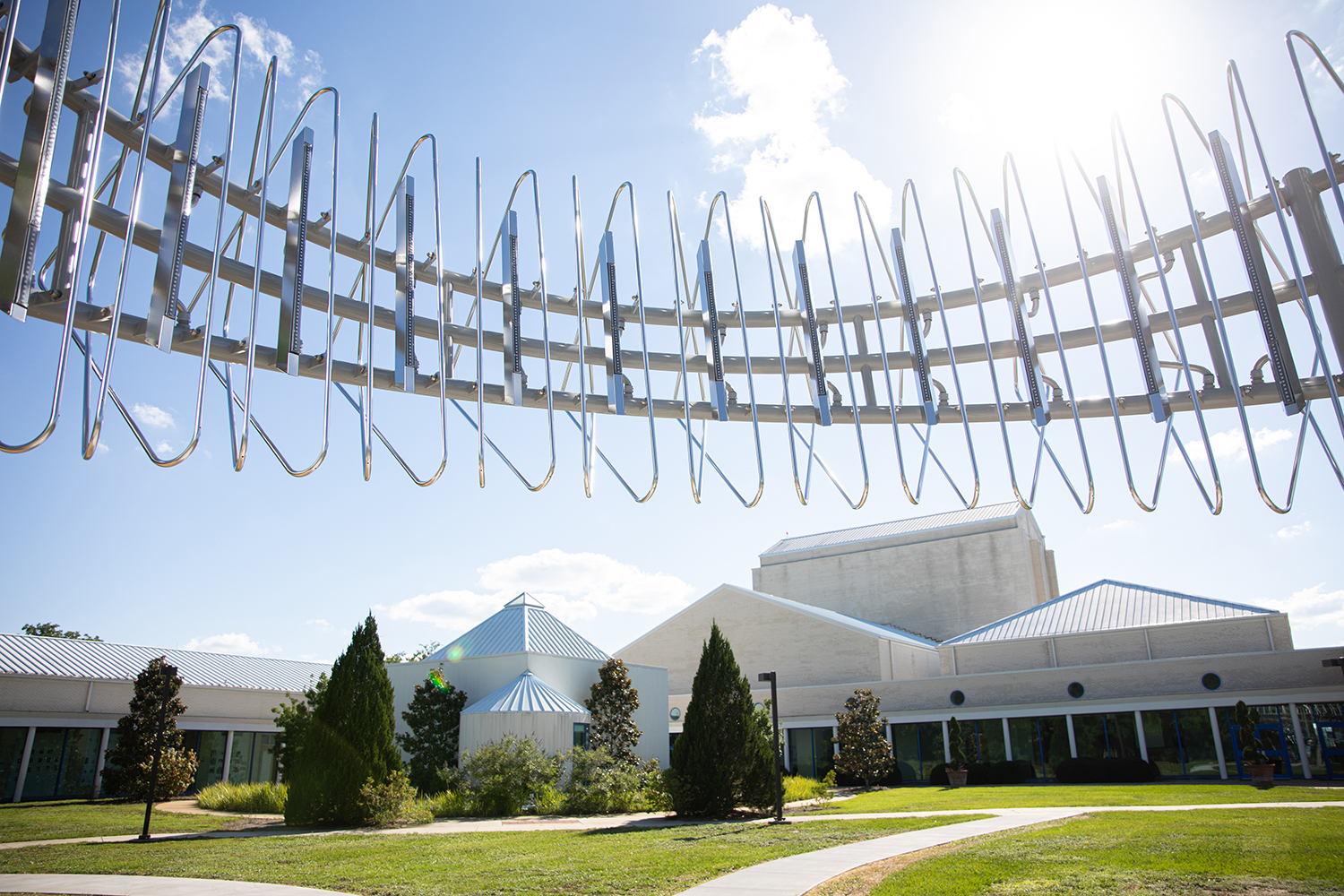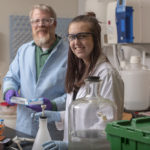
“There’s a lot of art in science and a lot of science in art.”
That’s the simple answer you’ll get if you ask Dr. Wade Jeffrey, director of UWF’s Reubin O’D. Askew Institute of Multidisciplinary Studies, the “why?” of the Institute’s mission.
Launched in January 2018, AIMS increases the visibility of science, technology, engineering, art and math initiatives by creating a hub for students and faculty to work on innovative community projects.
Jeffrey, also a Distinguished University Professor of biology and director of the Center for Environmental Diagnostics and Bioremediation, is charged with leading the University community in creating one-of-a-kind approaches to teaching and learning, while integrating the humanities and sciences to solve community problems and inspire relevant research.
One of the Institute’s initiatives, announced this summer, is a call to artists for the production of public art with a STEAM emphasis that will be installed on UWF’s Pensacola campus.
More than 120 proposals were received from artists across the U.S. and internationally from Australia, Spain and Poland.
The sculptures will highlight the potential for collaboration across disciplines and stimulate thinking on multidisciplinary work, particularly in the arts and sciences. They will also visually link their proposed sites on campus – outdoor locations across the street from each other near the Center for Fine and Performing Arts and the Hal Marcus College of Science and Engineering.
In July, a committee of faculty and staff from across campus selected 10 semifinalists:
- “Constellations” by Future Cities Lab in San Francisco
- “Moon Pod” by Craig Colorusso of Arkansas
- “Life in the Sea Grass” by Casto Solano of Spain
- “Light Guardians” by Skunk Control, an independent team of artists in Australia
- “NanoPrismatic Pavilion” by the New Media Public Art Collective in Arizona
- “Steam Beacon, Embracing the Sun” by Ray King of Philadelphia
- “Steam Theory” by Daniel Caven of Chicago
- “Bubble Ash” by Mirek Struzik of Poland
- “Interweaving Futures” by Hypersonic, a design studio based in New York City
- “Break and Through” by Xiaohan Li of Rhode Island
At an art exhibition, held in September at the Voices of Pensacola Multicultural Center, UWF and Pensacola communities were able to learn more about each of these proposals and see poster presentations of the designs.
This month, the committee selected the finalists, with the goal of the sculptures being installed by the end of April 2019. The two chosen sculptures are “Constellations” by Future Cities Lab and “Interweaving Futures” by Hypersonic. These awarded artists will be on campus for installation and will participate in public programming, interaction with students and professional development and networking for students and faculty.
“Constellations” by Future Cities Lab in San Francisco is one of the selected finalists. “Constellations” is an iconic sculpture that merges digital craft and cutting-edge fabrication with data visualizations of abstract phenomena found in nature at a variety of scales. The concept is to create a visual marker that acts as a portal into an invisible world of dynamic visual poetry inspired by ideas of science, art and technology.
Inspired by early studies and translations of animal locomotion using chronophotography and planetary motion simulations, “Constellations” uses geometry, light and shadow to create a meditative internal space that at night becomes a playful illuminated sculpture displaying constellations of motion. Never the same – always in flux.
The second chosen finalist is “Interweaving Futures” by Hypersonic, a design studio based in New York City. “Interweaving Futures” is inspired by Pensacola’s longleaf pine ecosystem and contemplates the conditions under which ideas are sparked, proliferate, take root and grow. From the pine cone’s complex geometry, the sculpture is inspired by a single golden spiral, along which two interweaving sculptural forms will oscillate.
At night, the two systems dance around one another via student-designed LED light displays. These light animations are meant to pay tribute to the fire-adapted landscape, essentially creating a calming and reflective “campfire” where students and faculty of all disciplines might meet and intermingle.
I simply cannot wait until this spring when I will get to walk across campus and admire what will be beautiful pieces of art. The installations will become iconic parts of UWF’s campus – and permanent reminders that when art and design meet science and technology, we can discover new ways of seeing the world, making it better.



